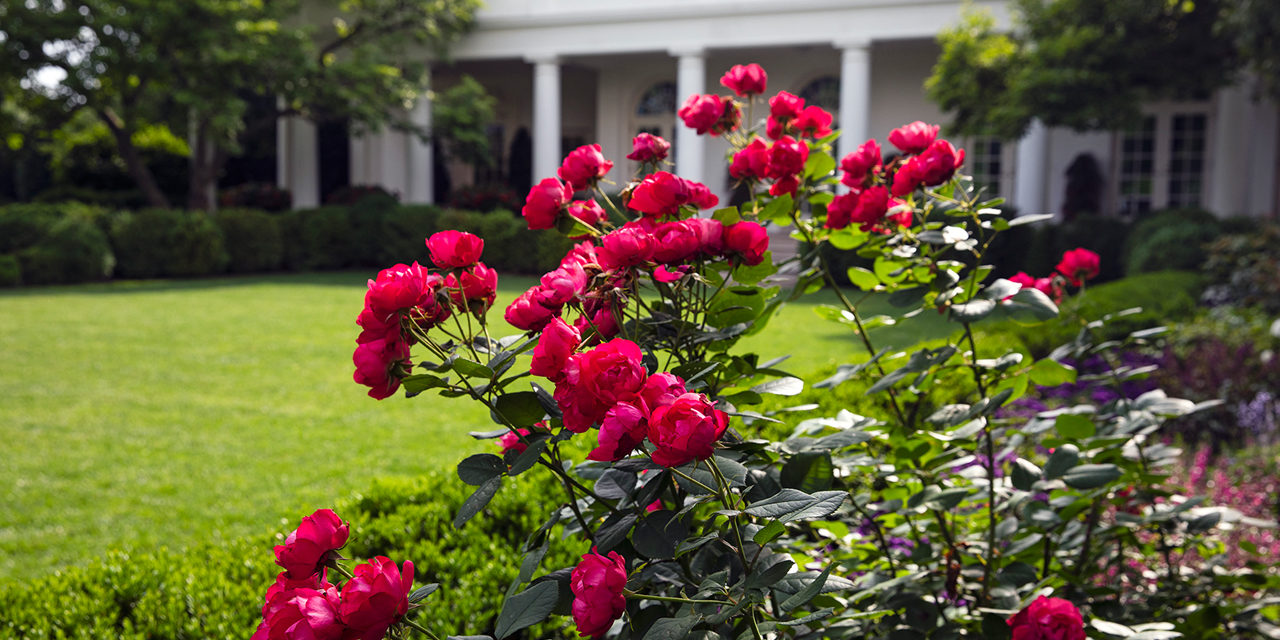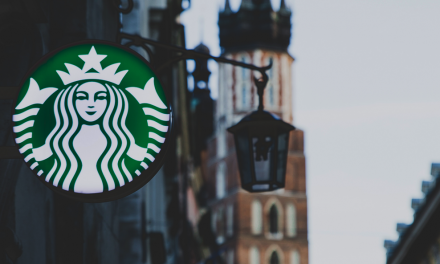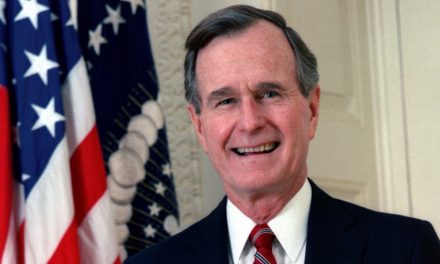Official Washington likes to believe that John and Jackie Kennedy created the White House Rose Garden. A recent essayist in the Washington Post, prosaically and rightly, said JFK emerged from a sail boat on Cape Cod, was inspired to fashion a public garden outside the Oval Office reflecting the beautiful gardens he had observed in Europe, and tasked the late Bunny Mellon, the daughter in law of the founder of the National Gallery of Art and a close friend of First Lady Jackie Kennedy’s, with the task of creating America’s Eden.
Mellon did indeed create the contemporary, vivid Rose Garden as we know it – an elegant space which borders two sides of the famed West Wing and the mansion itself, providing a diplomatic respite and occasional back-drop for numerous and historic presidential events, both public and private. I have been honored and humbled to be there many times, the most memorable being a nearly-perfect Washington Spring evening with the stars sparkling overhead and the glow from the West Wing windows shining, all refracting light in dark corners at the head of the South Lawn rolling down to Constitution Avenue below.
But the first inspiration for the garden was not the Kennedys’ and their Camelot ethos; rather, it was another refined and elegant 20th century figure now long-forgotten, Ellen Wilson, the wife of President Woodrow Wilson. As first lady, she was the first to have a vision for placing beautiful roses in an area that had historically been an otherwise attractive garden spot of a more colonial vintage at the White House. That space was equally alluring in its own time, and photos from that era have now mostly vanished into the mists of time.
Ellen Wilson remained a major figure in the life of Washington D.C. for many years after her husband’s stroke and death, and she even attended President Franklin Roosevelt’s famous speech on Capitol Hill officially declaring war on the Empire of Japan after the bombing of Pearl Harbor. Wilson’s late husband, of course, had led America into World War I from the same spot in the House of Representatives.
Ellen Wilson was known as a woman who loved beautiful things, and the Rose Garden is, in one sense, her major legacy — a gem that most Americans have come to associate with the life of our first couple, regardless of political party. Not only has Ellen Wilson’s vision been forgotten; so has the major restoration and update that FDR’s administration poured into the Rose Garden, even commissioning the most famous garden architect in American history, Frederick Law Olmstead Jr., to do a major upgrade and refashioning.
Olmstead’s greatest American achievement, of course, is Central Park in New York City; he was also the primary visionary and creator of Rock Creek Park in Washington DC which, to this day, provides the leafy string of pearls that makes Northwest Washington such a memorable series of little neighborhoods — replete with the National Zoo in the midst, and a lion who roars.
Now comes First Lady Melania Trump who will lead a renewed effort to enhance and further beautify the Rose Garden for this era, recognizing the organic prestige and quiet glory that rises from that unique grassy and flowery space just a few short steps from the most powerful set of offices in the world.
“Decades of use and necessary changes made to support the modern presidency have taken a toll on the garden and have made it more difficult to appreciate the elegant symmetry of the Mellon plan. The refreshment of the Rose Garden will return it to its original ’62 footprint and help ensure it will thrive with improved infrastructure, better drainage, and a healthier environment for plantings that reduce the risk of leaf blight,” says a White House release. Just so.
The president who had the most refined tastes on public gardens was not Wilson, Roosevelt, or Kennedy. It was our nation’s third president, Thomas Jefferson. He wrote at length, in a series of notes on gardens, about the importance of such spaces, and he saw them as consonant with the glory of the gravitas of important architecture in a great nation.
As fate would have it, President Kennedy actually read Jefferson’s garden notes, was deeply influenced and inspired by Jefferson’s ideas when we were but a new republic, and even thought it important, where possible, to plant flowers of Jefferson’s own era in the Rose Garden. That is a lovely symmetry and continuity, and worthy of Camelot’s progenitor.
Years later, Bunny Mellon said the Rose Garden was so important to JFK that Mrs. Kennedy arranged for roses from the garden to be placed at the president’s Arlington gravesite.
The wheel of history turns in good and meaningful directions, and the Rose Garden will soon be fully restored for a new era in the American experience.
Photo from The White House
Visit our Election 2020 page






